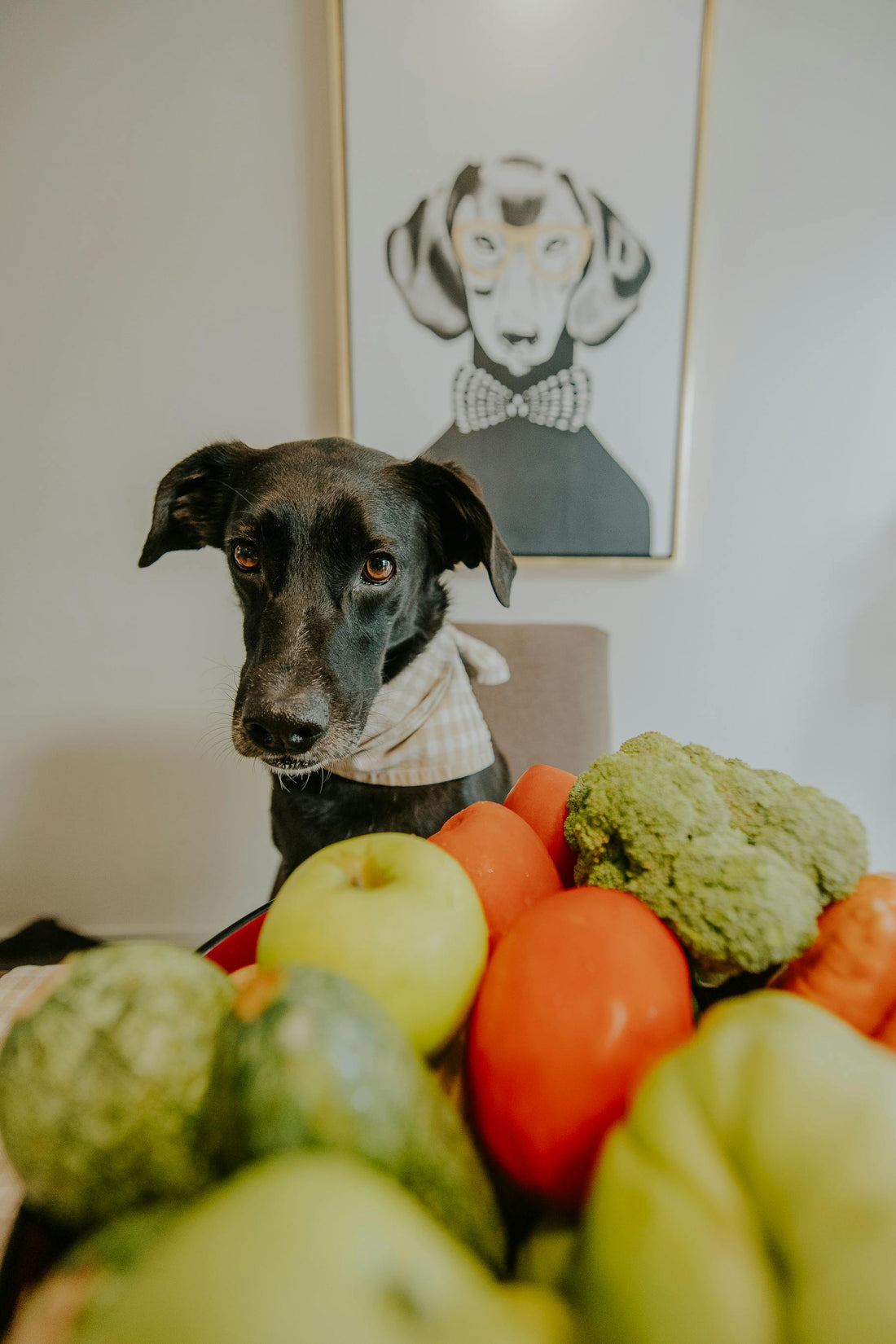
Feeding Fresh: A Beginner’s Guide to Homemade Dog Meals
Share
Homemade Healthy Dog Meals: A Natural Approach to Nourishing Your Pup
If you're like most dog parents, your four-legged friend isn’t just a pet — they're family. And when it comes to family, nutrition matters. That’s why more and more dog owners are turning to homemade healthy dog meals as an alternative to processed kibble and canned foods.
Feeding your dog home-cooked meals gives you control over ingredients, ensures freshness, and allows you to cater to specific dietary needs. While making meals from scratch may sound overwhelming at first, it’s actually a manageable and rewarding way to support your dog’s long-term health and wellbeing.
In this guide, we’ll explore the benefits of homemade meals, what dogs need nutritionally, which ingredients are safe (and which aren’t), and how to make this lifestyle change safely. Whether you’re considering a complete switch or just want to supplement your dog’s existing diet with fresh food, this post will help you take the first steps with confidence.
Why Homemade Dog Food?
Dog food manufacturers promise complete nutrition in a bag or can, but not all brands are created equal. Many commercial foods contain low-grade meat by-products, fillers like corn and soy, artificial colors, preservatives, and even trace contaminants. While some premium brands strive for better quality, preparing food at home gives you unmatched transparency.
Here’s why homemade meals might be the better option for your pup:
- Ingredient Control: You know exactly what your dog is eating — no mystery meats or chemical additives.
- Customization: Tailor meals to your dog’s specific needs, whether they have allergies, a sensitive stomach, or health conditions.
- Freshness and Quality: Homemade meals use fresh, often human-grade ingredients that can be healthier and more digestible.
- Fewer Digestive Issues: Many owners report firmer stools, less gas, and better overall digestion on home-cooked diets.
- Weight Management: You can portion meals based on your dog’s size, age, and activity level to prevent overfeeding.
Understanding Your Dog’s Nutritional Needs
Before diving into home cooking, it’s crucial to understand the basic nutritional requirements dogs need to thrive. A balanced diet for dogs should include:
- Proteins: Essential for muscle growth and energy. Sources include chicken, turkey, beef, fish, and eggs.
- Carbohydrates: Provide energy and fiber. Good options are brown rice, oats, sweet potatoes, and quinoa.
- Fats: Important for coat health, brain function, and energy. Sources include fish oil, flaxseed, and chicken fat.
- Vitamins and Minerals: Needed for everything from bone health to immune support. These often come from fruits, vegetables, and supplements.
- Water: Fresh, clean water should always be available.
Dogs also require specific ratios of nutrients that differ from humans, especially when it comes to calcium and phosphorus. A deficiency or imbalance can lead to health issues, particularly in growing puppies or senior dogs. This is why consultation with a veterinarian or pet nutritionist is strongly recommended when creating a long-term homemade meal plan.
Foods Dogs Can and Can’t Eat
When preparing meals for your pup, knowing which foods are safe (and which are dangerous) is non-negotiable. Some ingredients common in human diets can be toxic to dogs, even in small amounts.
Safe Ingredients:
- Lean meats (chicken, turkey, beef, lamb)
- Eggs (cooked)
- Rice, quinoa, oats, and sweet potatoes
- Carrots, green beans, peas, pumpkin
- Blueberries, apples (no seeds), bananas
- Spinach, kale (in moderation)
- Plain Greek yogurt or cottage cheese (if dairy-tolerant)
- Natural peanut butter (xylitol-free)
Dangerous or Toxic Foods:
- Chocolate
- Grapes and raisins
- Onions and garlic
- Avocados
- Macadamia nuts
- Xylitol (found in sugar-free gum and some peanut butters)
- Cooked bones (can splinter)
- Alcohol and caffeine
- Raw yeast dough
Always double-check unfamiliar ingredients and monitor your dog’s response to any new food introduced.
How to Transition to Homemade Meals
Switching from commercial food to homemade meals should be done gradually to avoid digestive upset. Sudden changes can result in vomiting, diarrhea, or food refusal. Here’s how to make the shift safely:
1. Start Slowly: Mix a small amount of the new homemade food into your dog’s regular food, gradually increasing the proportion over 7–10 days.
2. Monitor Reactions: Watch for signs of allergies, digestive issues, or changes in energy levels. Every dog is different.
3. Stay Consistent: Once your dog adapts, stick to consistent ingredients before rotating or adding variety.
4. Keep It Balanced: Homemade doesn’t automatically mean healthy — meals must be nutritionally complete. Consult your vet about adding necessary supplements like calcium, omega-3s, or multivitamins.
Signs of Success on a Homemade Diet
When your dog’s meals are well-balanced and tailored to their needs, you’re likely to see positive changes. Signs your dog is thriving on a home-prepared diet include:
- Shinier coat with reduced shedding
- Smaller, firmer stools
- Steady energy levels and healthy weight
- Better breath and fewer dental issues
- Increased enthusiasm at mealtime
- Less itching, licking, or scratching
If you notice adverse symptoms such as lethargy, hair loss, or digestive problems, consult your vet. Homemade diets can be wonderfully effective, but they must be managed with care.
Supplements: Should You Use Them?
Even with the best ingredients, some homemade meals can lack certain micronutrients. Depending on the base ingredients you’re using, your dog might need added:
- Calcium (especially if bones aren’t included)
- Omega-3 fatty acids (from fish oil or flaxseed)
- Vitamin E and B-complex
- Zinc and selenium
- Probiotics for digestive health
Always use canine-specific supplements unless otherwise approved by your vet. Human supplements often contain ingredients in concentrations unsafe for pets.
Meal Prep and Storage Tips
Cooking for your dog doesn’t have to be a daily task. With a little planning, you can batch-cook meals and store them safely.
- Batch Cook Weekly: Prepare several meals at once to save time.
- Use Airtight Containers: Store meals in individual servings to make portioning easy.
- Refrigeration: Keep meals fresh in the fridge for up to 3–4 days.
- Freezing: Meals can be frozen for longer storage — label with the date for rotation.
- Avoid Cross-Contamination: Use separate utensils and cutting boards for meat and produce, just as you would for your own food.
Homemade Dog Food Isn’t for Everyone — And That’s Okay
While many dog owners love cooking for their pets, it’s not a requirement to be a great dog parent. If you’re unable to cook regularly, consider mixing fresh food with high-quality kibble or using vetted delivery services that offer pre-cooked meals. The goal is better nutrition, not perfection.
Even small changes — like adding fresh veggies to kibble or using a homemade topper — can have big impacts on your dog’s health.
Conclusion: Feed with Purpose, Cook with Love
Homemade dog meals offer a meaningful way to care for your pup — giving them real, fresh food designed with their needs in mind. It’s a lifestyle change that comes with responsibility, but also with reward. You’ll gain confidence in what you’re feeding and watch your dog thrive on meals you’ve prepared with love.
Ready to take the next step in dog care and nutrition?
📘 Download "Healthy Homemade Dog Meals" — a valuable resource packed with guidance, recipes, and tips for raising a happy dog.
Empower yourself with knowledge. Your dog will thank you — with tail wags, kisses, and years of loyal companionship.
